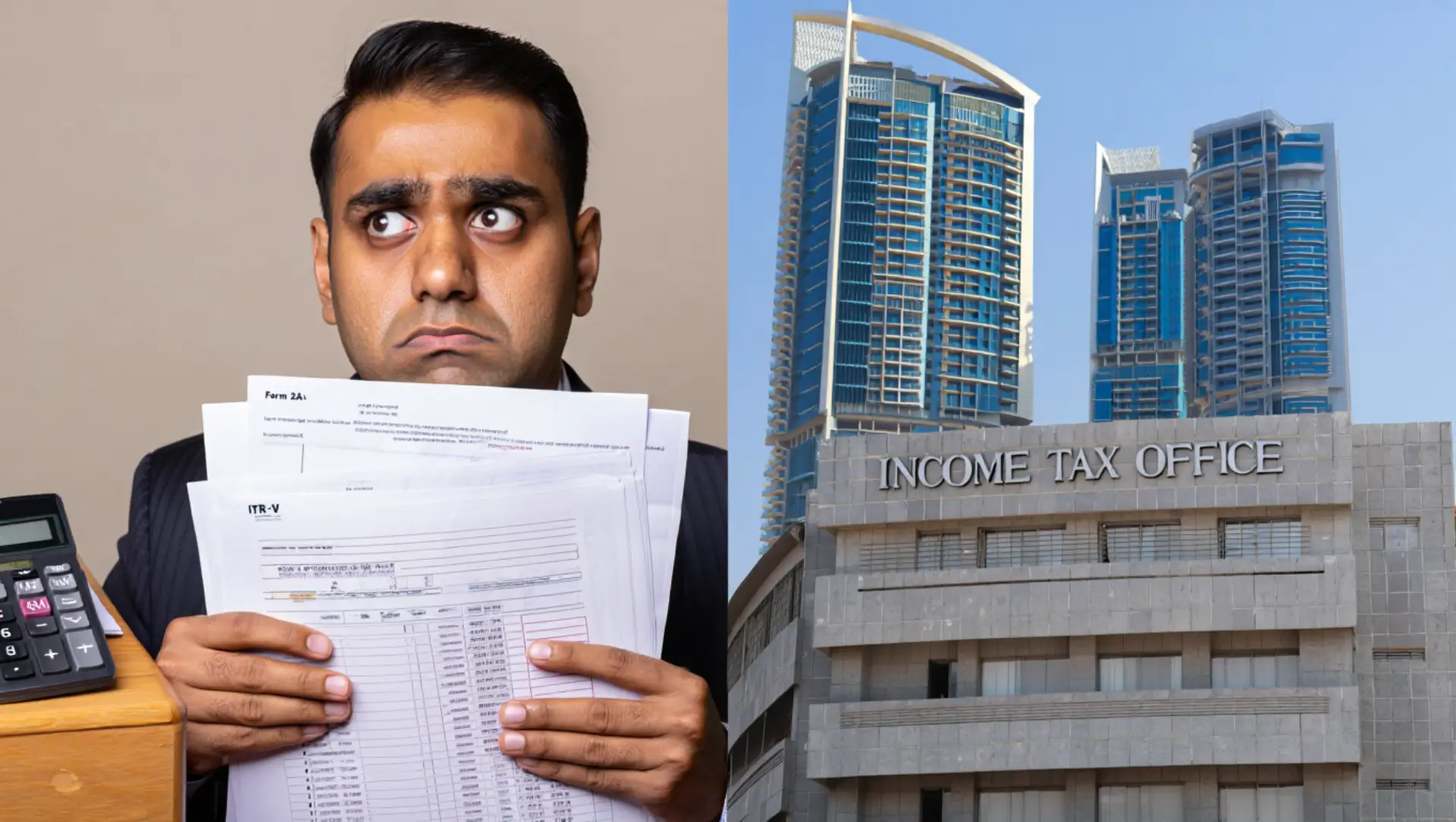Slash Your Dubai Property Tax Worries: A Guide for Indian Investors

Imagine this: you’ve just snagged a chic apartment in Dubai’s shimmering skyline, a dream investment with palm-lined views and a hefty ROI dangling like low-hanging fruit. But then, the tax questions creep in—gnawing doubts about property tax for Indian citizens in Dubai, hidden fees, or whether your rental income will vanish into an Indian tax vortex. For Indian buyers, who snapped up 35,000 properties worth $17 billion in Dubai by 2022, per recent leaks, this isn’t just curiosity—it’s a financial tightrope. Missteps could mean penalties, unexpected costs, or a tangled mess across borders. This article dives into the five biggest tax-related riddles Indian investors face, serving up practical fixes, hard numbers, and a clear path to keep your Dubai property profitable and stress-free.
Does Dubai Slap Property Taxes on Indian Owners?
Let’s kick off with the elephant in the room: the fear of a hefty property tax in Dubai for Indian citizens draining your investment dry. If you’ve ever lost sleep over annual levies like those back home—where property taxes can hit 1-2% of a home’s value—you’re not alone. Dubai’s allure as a tax haven sparks hope, but rumors of hidden charges keep skepticism alive.
Here’s the relief valve: Dubai doesn’t levy a traditional property tax. Zero. Nada. Unlike India’s municipal taxes, which can siphon off thousands yearly, Dubai skips this entirely. Instead, you’re looking at a one-time 4% transfer fee when buying—say, AED 80,000 ($21,800) on a $545,000 flat—split evenly between buyer and seller in most cases, per Dubai Land Department (DLD) rules. Ongoing? A modest 5% housing fee on your property’s rental value, bundled into your DEWA utility bill, averages AED 458 ($125) monthly for a mid-range unit. In 2024, DLD data pegs this as 3.6% of property costs over five years—second-lowest globally, trailing only Monaco.
What’s the play? Budget that 4% upfront—$10,900 if you’re the buyer—and factor in $1,500 yearly for housing fees on a $500,000 rental. No surprises, no annual tax hammer. Compare that to a $500,000 Mumbai flat, where you’d cough up $5,000-$10,000 yearly in taxes, and Dubai’s edge shines. Cannot overstate this: confirm fees with your developer pre-purchase to sidestep shocks. Check your SPA now—clarity starts there.
Must Rental Income Face India’s Tax Gauntlet?

Picture yourself renting out that Dubai condo—maybe netting AED 60,000 ($16,340) yearly—and then wondering if India’s taxman will swoop in to claim a chunk. Many Indian investors, especially those juggling dual tax systems, dread this cross-border clawback. The problem’s sharp: India taxes residents on global income, and a 30% slab rate could slice $4,900 off that rental haul.
The fix hinges on residency. If you’re an Indian resident—spending 182+ days in India yearly—yes, that rental income lands in your Income Tax Return (ITR) under “House Property.” But, you snag a 30% standard deduction ($4,902 off $16,340), dropping taxable income to $11,438, plus a foreign tax credit if Dubai taxes applied (they don’t). Non-residents? You’re off the hook—India leaves foreign income alone. In 2024, over 29,700 Indian owners in Dubai, per leaks, navigate this split. The India-UAE Double Taxation Avoidance Agreement (DTAA), signed in 1992, sweetens it—ensuring no double dip on personal income.
Practical steps seal the deal. Track your days in India—hit 181, and you’re a non-resident, dodging the ITR hassle. File anyway? Use Form 67 to claim DTAA credits, cutting your Indian tax by up to 100% on Dubai earnings. Last year, this saved filers an average $3,000, per tax consultants. Log your 2025 travel now—residency’s your shield.
What Fees Hit Indian Buyers at Dubai’s Door?
The upfront cost puzzle freaks out plenty of Indian buyers—forking over cash for a Dubai property, only to get blindsided by fees you didn’t see coming. Familiar situation: you’re eyeing a $300,000 studio, but the fine print feels like a treasure hunt gone wrong. Without clarity, you’re bleeding dirhams—or dollars—before keys hit your hand.
Let’s map it out. That 4% DLD transfer fee? $12,000 on a $300,000 buy, split at $6,000 each if the seller’s game. Registration’s next—AED 2,000 ($545) for properties under AED 500,000, or AED 4,000 ($1,090) above, plus a AED 580 ($158) admin fee. DEWA hookup? AED 2,110 ($575) upfront, covering electricity and water. Service charges vary—$1,000-$2,500 yearly for a 1,000-square-foot unit, based on 2024 community rates. Total sting for a $300,000 buy? About $10,278 in one-time costs, per DLD’s 2025 fee schedule. Contrast that with India’s 5-7% stamp duty ($15,000-$21,000), and Dubai’s leaner.
Here’s your move. Stash 5-6% of the purchase price—$15,000-$18,000—before signing. Demand a fee breakdown from your developer; 10% of 2024 buyers overpaid due to vague SPAs, says DLD. A $545 tweak now saves $5,000 later. Pull your calculator—budget it today.
Capital Gains: Taxed in India, Free in Dubai?
Selling your Dubai pad for a fat profit—say, $100,000 after two years—sounds golden until you ponder if India’s capital gains tax will crash the party. The dread’s real: short-term gains (under 24 months) at slab rates could nab $30,000, long-term (over 24 months) 12.5% without indexation since July 2024—$12,500 gone. Dubai’s tax-free promise feels too good, and you’re stuck double-checking.
Dubai delivers: no capital gains tax, period. Sell that $400,000 flat for $500,000, and all $100,000 stays yours—zero local cuts, per UAE law. India? Residents pay—short-term at 30% ($30,000) or long-term at 12.5% ($12,500)—but non-residents dodge it entirely. DTAA backs this: Article 13 lets India tax residents’ gains, but Dubai’s zero rate means no double hit. In 2023, 38% of Indian freehold sales flipped within three years, netting 10-15% gains tax-free, per market reports.
Your playbook’s tight. Hold 24+ months—slash tax from $30,000 to $12,500 if resident. Better yet, stay non-resident—zero Indian tax, 100% profit. Reinvest under Section 54 in India, and you’re exempt up to $100,000 on a new home. Check your sale timeline now—profit’s yours to keep.
How Does the India-UAE DTAA Save Your Dubai Earnings?

The India-UAE Double Taxation Agreement sounds like a lifeline, but many Indian investors sweat over whether it really shields their Dubai gains—or if it’s just jargon-heavy smoke. The stakes? Misjudge it, and you’re hemorrhaging cash to two tax systems, a nightmare when 2024’s 167,000 Dubai transactions topped AED 454 billion.
DTAA’s your guardrail. Signed in 1992, updated 2015, it ensures income—like rent or gains—taxed in Dubai (at 0% for individuals) isn’t re-taxed in India for residents, via credits or exemptions. Rental income? India taxes residents, but DTAA’s credit offsets any Dubai tax (none exists). Gains? Dubai’s tax-free; India hits residents, but non-residents skate free. A 2024 PwC report notes 85% of cross-border Indian investors lean on DTAA, saving $2,000-$5,000 yearly. Fun twist: it doesn’t cover UAE’s 9% corporate tax—only personal income.
Here’s the drill. File Form 67 with your ITR—claim credits even if Dubai’s tax is zero, proving compliance. Check residency yearly; 181 days abroad, and DTAA’s full power kicks in. Visit https://www.incometax.gov.in for forms—download and file today.
Your Tax-Smart Path to Dubai Property Riches
From zero property tax in Dubai for Indian citizens to DTAA’s protective net, the tax maze doesn’t have to choke your investment. Fees are lean—$10,000-$15,000 upfront beats India’s heftier duties—and rental yields (5-8%) stay yours if residency’s played right. Capital gains? Untouched in Dubai, manageable in India. Arm yourself with these tools—fee foresight, residency hacks, DTAA mastery—and your $300,000 Dubai bet could yield $24,000 yearly, tax-smart and secure. Start now: tally your days, file that ITR, and watch your wealth grow.





